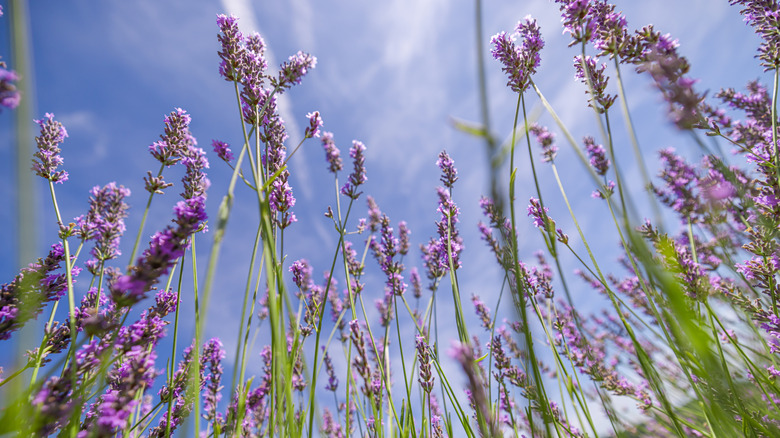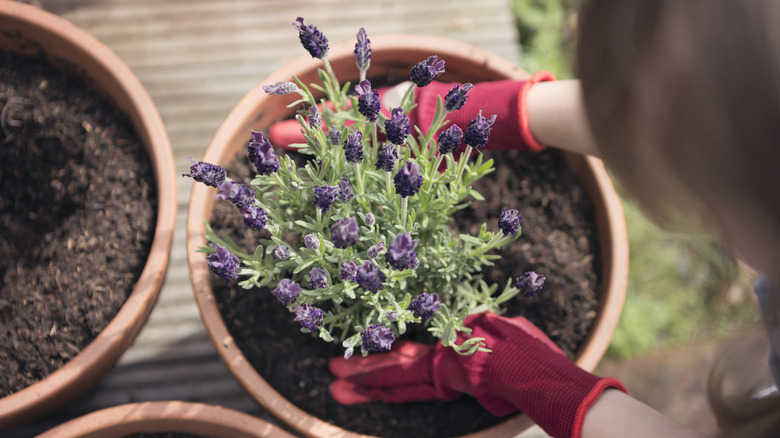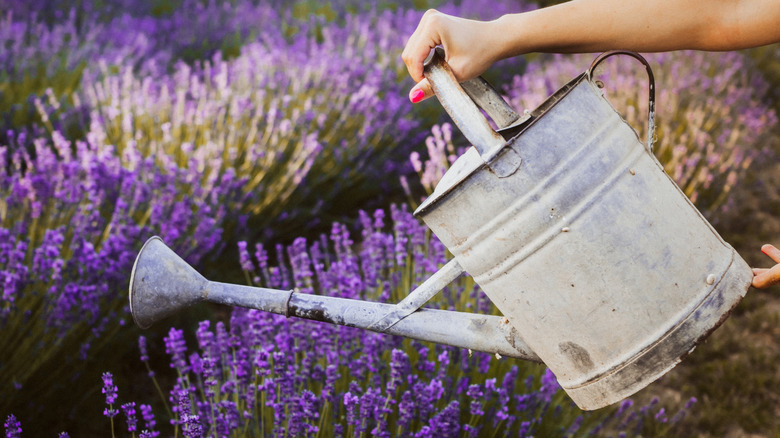Lavender: Is It Better Off Planted In The Ground Or In Containers?
Lavender (Lavandula) is a fragrant herb often found in bubble baths and candles, but if you want to grow it yourself, are you better off planting it in your flowerbed or in a container? That all depends on the conditions of your yard, the severity of your winter, and the kind of lavender you want to grow. If you have dense soil or brutal winters, then planting your lavender in pots might be the best bet. If you live in a mild climate with raised beds, lots of sun, and great drainage, then planting them in your garden could be a better strategy and might help you avoid common problems with lavender plants.
Known for its grayish-green, pin-like leaves, Lavender has fragrant purple flowers that appear in the summer, usually sometime in June. As a member of the mint (Lamiaceae) family, it can be used in tea or to spruce up your latte. The dried flowers can keep some of their vibrant color, and lavender oil can aid in healing wounds while also helping you fall asleep.
On top of its numerous uses, lavender conveniently thrives in both flowerbeds and pots. This dwarf shrub can grow from ten inches tall to as high as four feet, depending on the species. In the right conditions, it will bloom again and again, either in a pot or your garden. Deciding the best place for lavender really depends on climate, soil conditions, and sun.
Harsh winter? Put that lavender in a pot
To decide whether you want to plant your lavender in a pot or flowerbed, first take into account what kind of lavender will be able to survive your winters. There are many lavender plant varieties, including English lavender (L. angustifolia), French lavender (L. dentata), and Spanish lavender (L. stoechas). Lavender originated in the Mediterranean, so all species prefer milder temperatures, but some are more resilient to cold than others.
English lavender, so called because you can find it all over the English countryside, is a little more cold-resistant, preferring USDA Hardiness Zones 5 through 8. Meanwhile, French and Spanish species are more delicate and opt for warmer climates — preferably zones 8 through 11. If you're in zones 1 through 4, it's best to put lavender in a container, rather than the ground, since it likely won't survive the winter.
Bring your pot inside when temperatures fall below freezing. Stick that pot by the window for a full day of sun and make sure the pot has decent drainage, and the lavender will thrive. Keep the fragrant herb away from pets, though, as it's poisonous to cats and dogs. Cats are more sensitive to the chemicals in lavender, like linalyl acetate and linalool, than dogs are.
Lots of sun and alkaline soil? Plant that lavender in the ground
You can keep the lavender outside if you live in a mild climate. If you're in zones 5 through 11, and you're still worried about cold snaps, you can add some extra insulation and protection for your plants by laying down a winter mulch. Either straw or evergreen twigs will work well. Even in mild climates, however, the makeup of your soil is a consideration.
Lavender typically prefers neutral to higher pH levels. If you have acidic soil and lots of shade from pine trees, then lavender will not flourish there. It might live for a year or two, but then it will start withering. Since lavender likes alkaline soil, avoid acidic fertilizers like coffee grounds.
Lavender tends to hate clay soil, as well, and prefers well-drained, more porous conditions, so keep that in mind as you think about the best way to plant lavender. Try mixing a little sand into the soil to help with drainage. It also hates overwatering, no matter what soil it's in, since it can easily fall prey to root rot. If you see yellow leaves, that could mean the ground is too wet for your plant. Raised beds are a great bet for lavender since they tend to drain better, and you can pick the kind of soil you add to them. Finally, this perennial loves sunlight, but it's good to note that it doesn't like super humid conditions without good air flow.


